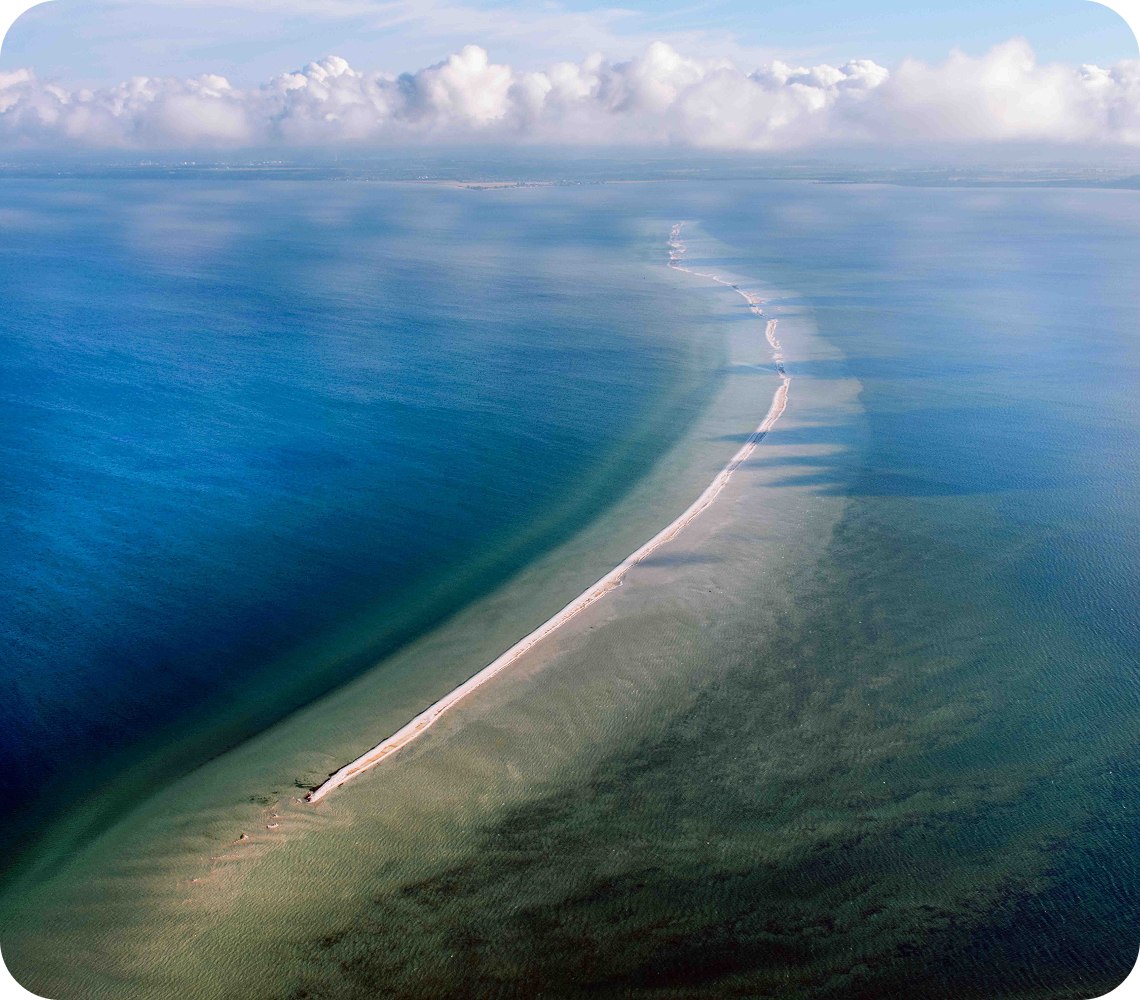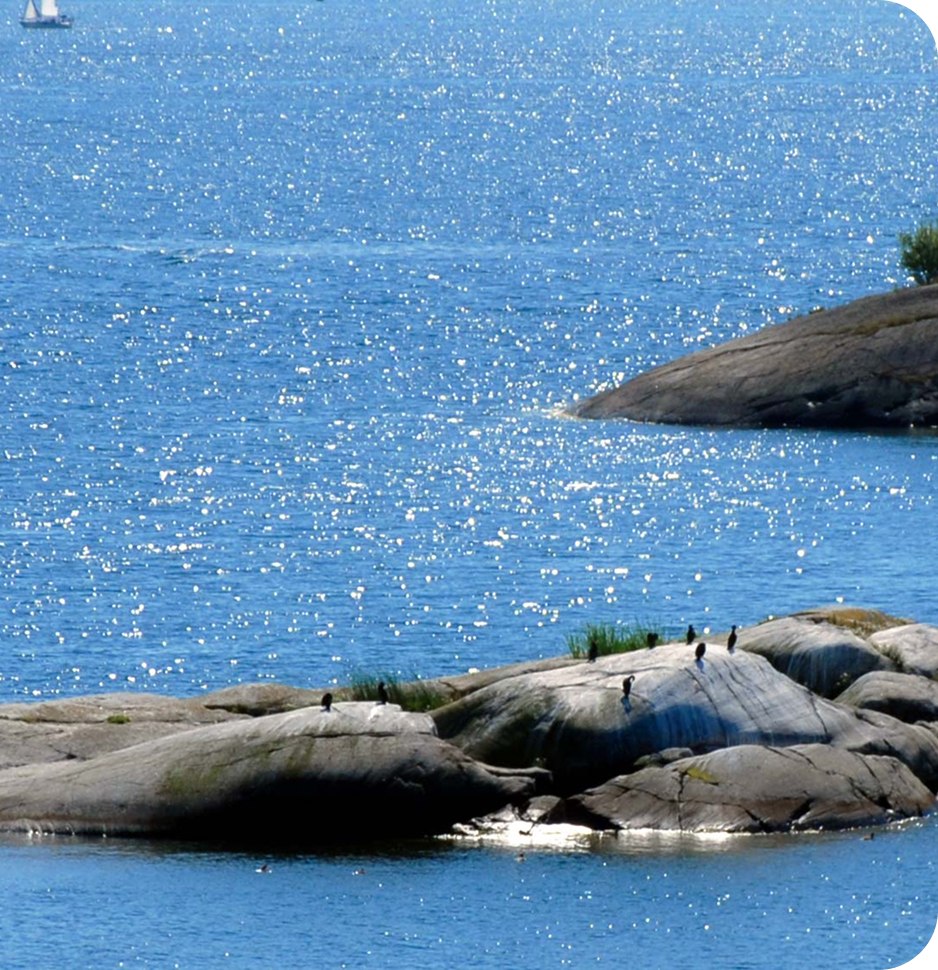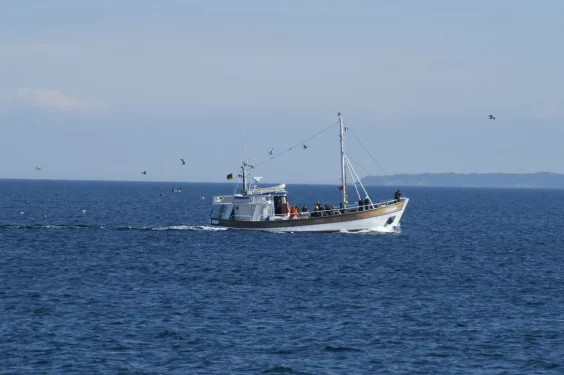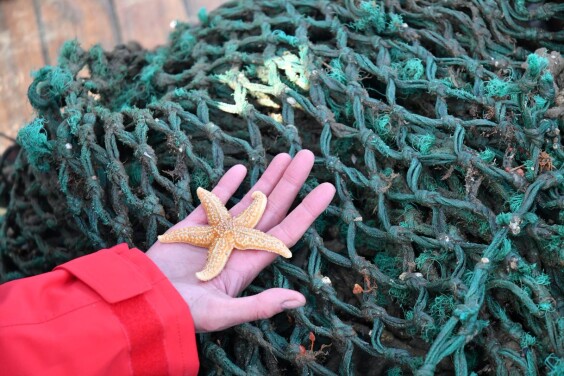The Baltic Sea
A unique sea we must preserve
The Baltic Sea is home to millions and a first-class tourist destination. Few who visit its beaches would suspect that large parts of the Baltic Sea are already dead.
As a grant-making foundation, BaltCF works to protect and restore the Baltic Sea as a contribution to ocean protection, especially by supporting impactful projects and measures that focus on ecosystem restoration, creating Marine Protected Areas, reducing eutrophication and the impact of fisheries.

Overview
What makes the Baltic Sea special?
The Baltic Sea is one of the most polluted seas in the world. It suffers from a range of problems that are reinforced not only by global warming, but also by its very special geography and delicate ecological equilibrium.
Why the Baltic Sea matters
The Baltic Sea is an opportunity for ocean protection. Its functions need a healthy, intact ecosystem which is highly endangered at this point.
It matters because it is:
Home to millions of human beings and a vast number of fish, birds, mammals, other animals, as well as plants
A critical traffic and infrastructure backbone in Europe
A source of food and income
An important tourist destination

The four main challenges
Eutrophication: When too many nutrients suffocate the sea
The Baltic Sea has only a small connection to the Ocean, and is otherwise surrounded by land. The input of freshwater from the rivers comes from a catchment area more than five times the size of the sea itself.
This is a big deal because fertilizers from agriculture leech into the rivers, and then end up in the sea. The buildup of nutrients – known as eutrophication – causes algae blooms. And this problem is much bigger than whether humans can take a swim.
Why is eutrophication a problem?
- The algae die in autumn and sink to the bottom of the sea.
- There, they get consumed by microorganisms that use up oxygen.
- Enough dead algae, and all the oxygen gets used up.
- It is then replaced by toxic sulfur compounds produced by certain bacteria that don’t need oxygen.
The result: Dead zones in which only some bacteria can live.
Up to 10% of the Baltic Sea’s volume is temporarily or permanently dead in this sense already.
Even if there is plenty of oxygen, the increase in algae causes the water to be less permeable for light. This contributes to the widespread loss of larger underwater plants like bladderwrack, which form important habitats for many species.
Habitat destruction and overuse
Eutrophication is one of the biggest threats to the Baltic Sea, but not the only one. Coastal habitats like dunes, wetlands, or lagoons that are crucial for many species have been degraded, causing biodiversity loss and often increasing eutrophication.
Overfishing has caused many fish stocks to collapse, worsened by thousands of river barriers that prevent migrating fish like the Salmon from procreating in the first place.
Because the Baltic Sea’s biodiversity is low to begin with, the web of species is especially sensitive, and a loss in biodiversity therefore especially critical.
Pollution: Heavy traffic and a toxic legacy
As the Baltic Sea has one of the most intense marine traffic on Earth, the many ships and ports cause habitat loss and noise pollution. They also do their part in bringing litter and harmful substances into the sea.
There’s also a more hidden threat: decaying shipwrecks and dumped ammunition from World War II. These underwater hazards pose a growing risk of oil and chemical leaks, adding to the sea’s toxic burden.
Climate Change: A fast-warming, shallow sea
As a result of global warming all water bodies warm up, but the Baltic Sea does so especially fast. This warming increases the oxygen loss, leading to more dead zones. It also disrupts food webs.
For example, the Baltic herring spawns earlier now than it used to because the water is warm enough earlier – but the food source for the larvae still isn’t there yet. The result: the young herrings starve. The warming also threatens species like the ringed seal that depend on the ice that covers parts of the Baltic Sea in winter.
What happens in the Baltic, stays in the Baltic
Many of these problems are especially grave because the Baltic Sea is so small.
- It is only a bit larger than Germany.
- It is very shallow.
- It is almost entirely cut off from the Ocean.
This means that all the different pressures hit a small body of water, and the limited inflow from the North Sea does little to dilute the pollution. Because of this geography, biodiversity in the Baltic Sea is also in a delicate state to begin with.
Unique and fragile living conditions: brackish water
- The Baltic Sea’s water is brackish: This means it is not really salt water, but neither freshwater. This happens because the inflow of salt water is limited, and the rivers constantly provide freshwater,
- The Baltic Sea has a salinity that varies greatly: The further away from the Danish straits you get, the lower the salt content is.
These are unique conditions with great effect on the areas different species can live in, because freshwater species usually cannot tolerate salt water well and vice versa. This leads to a great variation in biodiversity in the sea itself – with species being more sensitive to additional pressures.

Why marine conservation is not enough
In addition to the Baltic Sea’s dependence on the surrounding rivers, many species of the Baltic use multiple habitats during different life stages.
For example:
- Many fish start in shallow bays where eggs can be laid, and which offer more protection from both waves and predators as well as food. Later, they move to the open water.
- Others, such as the Salmon, migrate from the sea to rivers to spawn
- Migrating birds use the Baltic Sea region for breeding or resting.
This makes it important to look at the Baltic Sea as a complex ecosystem with strong connections to land and freshwater. That is why BaltCF funds ecosystem restoration not only in the sea itself, but also on land.
BaltCF’s contribution
Past damage is hard to undo because we cannot count on water from the Ocean to dilute the pollution and to carry away the litter. But we can make up for some of it, and this is where BaltCF supports nature conservation efforts like:
the restoration of degraded habitats, including coastal dunes, wetlands and rivers
the removal of nutrients and litter like ghost nets from the Baltic Sea
BaltCF also helps to prevent further degradation of the Baltic Sea by supporting efforts that aim to:
reduce pollution, especially by nutrients to reduce eutrophication
create effective Marine Protected Areas as well as protected areas on land, where life can recover
Funded Projects
BaltCF supports projects and other measures that help restore and protect the Baltic Sea. Explore the activities we fund.
The chance for ocean protection
Some of the Baltic Sea’s unique features are also its strengths:
- It is a living laboratory: Because it is so sensitive to pressures and because its shallowness lets it warm up much faster than other seas, it is a living laboratory for many issues the oceans at large face now and in the future.
- It is one of the most intensely studied and monitored seas in the world: Also with a high degree of international cooperation around it, it has a lot of potential for the development of solutions by science, business and politics, and for acting as a role model for ecosystem conservation.
For example: Measures to reduce eutrophication have informed strategies in the Black Sea and the Great Lakes.


